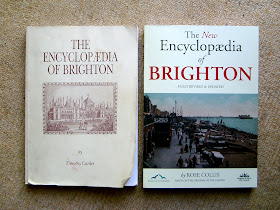Viewed from either end of the garden(or the top of a bus) the aesthetic logic of the new landscaping is apparent and no doubt will become more so as the plants mature and the temporary fencing can be removed. However, one still worries about the cost of maintenance, especially of the long edges. Can plants be chosen such that they are sufficiently vigorous to survive and suppress weeds in this high stress location, yet not so vigorous that they eventually swamp others or spread into the grass? It seems a difficult balancing act to achieve but if it is not, the alternative is for the expenditure of man-hours of gardening labour which the City seems ill-placed to afford. Perhaps the council is hoping for volunteers to supply the deficit as with the Pavilion and Preston Manor gardens?
Revisiting my last post on this subject, and leaving aside the question of maintenance, I can see that this scheme might be attractive to the eye of the casual passer-by, as obviously intended. Perhaps criticism should not be aimed at the particular design but at the failure to first agree a prime objective, i.e. to consult widely about the use of the garden as an open space in one of the busiest parts of the City. In fact it would be good if there could be a wider-ranging public consultation about the whole length of the Valley Gardens to set long-term goals. The needs of traffic seem to have dominated the picture for too long. Is there really any need to have the Gardens crossed by roads three times along their length?
















